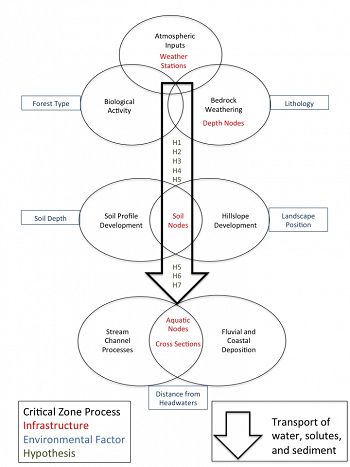RESEARCH





Do not fill out this information.
On this particular page, the Initial Text and Image fields for this template are not used (inactive). A Carousel Slideshow is displayed instead.
To edit the Carousel Slideshow, Choose Edit Existing > Carousel Slides. Then navigate to your CZO's entry entitled "Research"
Research in the Luquillo Critical Zone Observatory
The Luquillo Critical Zone Observatory (LCZO) focuses on how water balances and mass fluxes differ in landscapes with contrasting lithology across a range of climatic and vegetation zones. Parent material has been recognized as a state factor for landscape and soil development for over a century. However, the influences of lithology on denudation, hydrologic routing, and the elemental cycles and flows is still poorly constrained in most studies. The LCZO will use the natural laboratory of the Luquillo Mountains to determine how critical zone processes differ in watersheds underlain by quartz diorite (GD ) and volcaniclastic (VC) bedrock (Figure 1). Specifically, the LCZO will address how the bedrock is coupled to or decoupled from the hydrologic, geochemical and biogeochemical cycles in these watersheds. A set of interrelated hypotheses (Figure 2, Table 1) will be tested taking advantage of the cohesive network of sampling sites (Table 2) and a unified data management system. This approach facilitates controlled comparisons across bedrock (GD, VC) types, landscape position (ridge, hillslope, riparian), depths (surface to bedrock), forest type (Tabonuco, Colorado, Cloud) and distance from the headwaters (upland to coastal).
Short term responses (e.g. days to seasons) to be investigated include the influence of lithology on biogeochemical responses to storms and droughts, and the influence of lithology on hydrologic routing and watershed hydrologic budgets. Recent research indicates there are greater seasonal variations in the chemistry of atmospheric inputs and soils processes than previously expected (Heartsill et al 2007, Shanley 2008, Scholl in press). These responses will be quantified using an improved network of weather stations, nested stream gages and multi-investigator event sampling campaigns. Responses at intermediate time scales (e.g. decades to centuries) will be evaluated by quantifying stream channel dynamics and examining the conditions in the past recorded in the sediments of the floodplains and coastal zones. The long-term influences of lithology on sediment generation, hillslope and landscape development will be evaluated in studies of bedrock weathering rates and rates of saprolite and soil formation.
Figure 2: Conceptual framework and relationships between the hypothesis and sampling nodes for the Luquillo Critical Zone Observatory. Infrastructure is in red while hypothesis are in green.
Hypothesis 1: The rate of saprolite advance varies with regolith thickness and landscape position and is fastest in GD valleys and slowest on VC ridges. Over large areas, the rate of saprolite advance will equal the rate of denudation and can be predicted from bedrock chemistry, porefluids, and physical rock properties (Brantley, Buss, White, Heimsath, Willenbring,).
The rate of saprolite production increases with regolith thickness, which depends on landscape position and bedrock type. The rates should be fastest in GD valleys and slowest on VC ridges. Over large areas, the rate of weathering will equal the rate of denudation resulting steady state landscape profiles. The magnitude of the rates can be predicted from bedrock chemistry, porefluids composition, and physical rock properties
Hypothesis 2: In surface soils, chemical transformations of atmospheric inputs are decoupled from bedrock lithology and influenced by soil carbon, surface redox, and plant nutrient cycling. Biotic influences on soil biogeochemistry decrease with storm intensity and soil depth and are greatest in surface soils of the VC during low intensity rainfalls (Johnson, Shanley, Silver, Scatena, UPR).
Hypothesis 3: The routing of water through the critical zone is determined by bedrock lithology. The residence time will be longer in areas underlain by GD and shorter in areas underlain by VC resulting in differences in water chemsitry. However these differences will decrease with storm intensity and duration (Scholl, Scatena, Shanley, McDowell).
Hypothesis 4: Over seasonal time scales, iron reduction and the associated CO2 production will vary across the landscape based on differences in soil redox and organic matter content. Iron reduction will be greatest in riparian VC surface soils and lowest at depth on stable GD ridge tops. At larger spatial scales and longer time scales deep weathering rates and iron cycling are closely linked to the frequency of low redox events and carbon availability (Silver, Brantley, Plante)
Hypothesis 5: The morphology and soil biogeochemistry of riparian and colluvial deposits varies systematically with lithology and distance from the headwaters. In contrast, the vegetation and soil organic matter chemistry vary systematically with rainfall and temperature (McDowell, Plante, Silver, Scatena, Jerolmack).
Hypothesis 6: Surface erosion is the dominant source of sediment to the stream channel network across the entire landscape. While surface erosion is associated with rainfalls of moderate intensity in VC watersheds, in the GD watersheds sediment originates from the landslides associated with high intensity precipitation events (Jerolmack, Horton, Willenbring, Scatena, Shanley).
Hypothesis 7: The temporal resolution of the climatic disturbances and land use change recorded in coastal and fluvial sediments differs between lithologies. The GD watersheds will have a higher resolution record than corresponding environments in the VC watersheds because of …(Horton, Willenbring, Jerolmack, Heimsath, Scatena).
Figure 1; Luquillo Critical Zone focus watersheds. With stream gages (water droplets).
Figure 2: Conceptual framework and relationships between the hypothesis and sampling nodes for the Luquillo Critical Zone Observatory. Infrastructure is in red while hypothesis are in green.
Research News
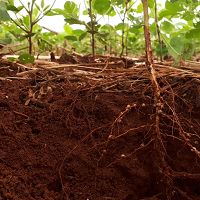
FEATURED NATIONALLY
NSF Blog: No soils, no life
27 Oct 2020 - They’re beneath our feet, but we seldom hear important signals in the soils

FEATURED NATIONALLY
2020 CZO Webinar Series on Sustainability
17 Jun 2020 - For an updated listing of these talks, including abstracts, see /national/education-outreach/sustainability-2020/ The U.S....

FEATURED
CZOs at AGU 2019
19 Nov 2019 - A list of CZ-related sessions, abstracts and events at the 2019 AGU Fall Meeting.

FEATURED
CZ colleagues: Please contact us about proposals for NSF’s CZ Collaborative Network, due 02 Dec 2019
08 Jul 2019 - CZO will end Nov 2020, succeeded by the “CZ Collaborative Network”. Let’s explore how the CZ community can build upon the CZOs via new NSF proposals.
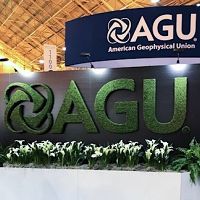
FEATURED
CZOs at AGU 2018
19 Nov 2018 - The 2018 AGU Fall Meeting will be held December 10-14 in Washington, D.C.

FEATURED
NSF Discovery articles focus on the CZOs.
10 May 2018 - The Discoveries section of the National Science Foundation's website on Critical Zone Observatories (CZOs).
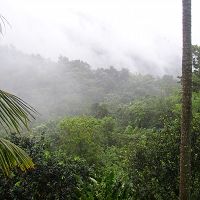
FEATURED
NSF Discovery: Can an ancient ocean shoreline set the stage for a tropical forest of today?
13 Jul 2017 - Researchers at NSF Critical Zone Observatory and Long-Term Ecological Research sites are finding out.

FEATURED
Extreme Rainfall Doesn’t Always Mean Extreme Erosion, Penn Study Finds
10 May 2016 - A new study suggests suggest that the self-organization of bedrock river channels blunts the impact of extreme rainfall events.

FEATURED
Critical Zone Profile - JAIVIME EVARISTO (ecohydrologist, PhD student)
23 Mar 2016 - PhD student, Global Institute for Water Security, University of Saskatchewan
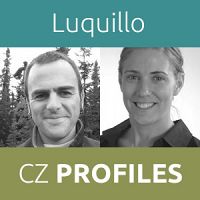
FEATURED
Critical Zone Profiles - Meet the people doing CZO science (Luquillo CZO)
15 Nov 2015 - Get a sense of the people and the work. Several members of the Luquillo CZO are profiled here, including students and professors.
Luquillo CZO SAVI International Scholars Program recipients anounced
10 Apr 2018 - Two Luquillo CZO researchers have been named SAVI International Scholars Program recipients, Emma Harrison from the University of...
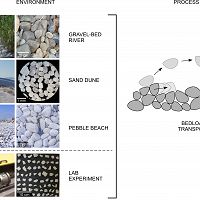
By river, ocean, or wind, rocks round the same way
04 Apr 2018 - The milky, smooth texture of beach glass evokes a history of turbulent transport, rough edges abraded away to produce curves. The same smooth...
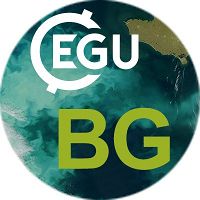
Discussion paper open till April 5th in Biogeosciences
06 Mar 2018 - A discussion is open for the manuscript, "Elevating the biogeosciences within environmental research networks".

Teachers Data Jam Workshop
22 Jan 2018 - On Saturday, January 13, we successfully held our third Teacher Data Jam Workshop of the Luquillo LTER Schoolyard Program. On this occasion,...
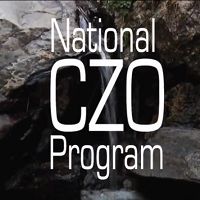
White paper of 2017 CZ Science Meeting in Arlington, VA
01 Jan 2018 - New Opportunities for Critical Zone Science Following the June 2017 Arlington Meeting for Critical Zone Science (hosted by CZO), a white booklet...
Example Publications
FEATURED
Ecological and genomic attributes of novel bacterial taxa that thrive in subsurface soil horizons. Brewer, Tess E., Emma L. Aronson, Keshav Arogyaswamy, Sharon A. Billings, Jon K. Botthoff, Ashley N. Campbell, Nicholas C. Dove, Dawson Fairbanks, Rachel E. Gallery, Stephen C. Hart, Jason Kaye, Gary King, Geoffrey Logan, Kathleen A. Lohse, Mia R. Maltz, Emilio Mayorga, Caitlin O’Neill, Sarah M. Owens, Aaron Packman, Jennifer Pett-Ridge, Alain F. Plante, Daniel D. Richter, Whendee L. Silver, Wendy H. Yang, Noah Fierer (2019): mBio Oct 2019, 10 (5) e01318-19 Cross-CZO National
FEATURED
Mercury sourcing and sequestration in weathering profiles at six Critical Zone Observatories. Richardson, Justin B., Arnulfo A. Aguirre, Heather L. Buss, A. Toby O'Geen, Xin Gu, Daniella M. Rempe, and Daniel deB. Richter (2018): Global Biogeochemical Cycles, 32(10):1542-1555 Cross-CZO National
FEATURED
Ideas and perspectives: Strengthening the biogeosciences in environmental research networks. Richter, D.D., S.A. Billings, P.M. Groffman, E.F. Kelly, K.A. Lohse, W.H. McDowell, T.S. White, S. Anderson, D.D. Baldocchi, S. Banwart, S. Brantley, J.J. Braun, Z.S. Brecheisen, C.W. Cook, H.E. Hartnett, S.E. Hobbie, J. Gaillardet, E. Jobbagy, H.F. Jungkunst, C.E. Kazanski, J. Krishnaswamy, D. Markewitz, K. O’Neill, C.S. Riebe, P. Schroeder, C. Siebe, W.L. Silver, A. Thompson, A. Verhoef, G. Zhang (2018): Biogeosciences 15: 4815-4832 Cross-CZO National
FEATURED
Special issue of The Earth Scientist about the Critical Zone and the US NSF Critical Zone Observatory (CZO) program. CZO Education/Outreach team (2016): The Earth Scientist, Volume XXXII, Issue 3, Fall 2016 Cross-CZO National
FEATURED
Reconstructing the transport history of pebbles on Mars. Szabó T., Domokos, G., Grotzinger, J.P., Jerolmack, D.J. (2015): Nature Communications
FEATURED
A field comparison of multiple techniques to quantify groundwater–surface-water interactions. González-Pinzón, R., Ward, A., Hatch, C., Wlostowski, A., Singha, K., Gooseff, M., Haggerty, R., Harvey, J., Cirpka, O., and Brock, J. (2015): Freshwater Science, 34(1) Cross-CZO
FEATURED
Analytical model for flow duration curves in seasonally dry climates. Müller, M.F., Dralle, D.N., and Thompson, S.E. (2014): Water Resources Research 50(7): 5510-5531. Cross-CZO
Impact of ecohydrological fluctuations on iron-redox cycling. Calabrese, Salvatore, and Amilcare Porporato (2019): Soil Biology and Biochemistry 133: 188-195 Cross-CZO
Nutrient export and elemental stoichiometry in an urban tropical river. William H. McDowell, William G. McDowell, Jody D. Potter, Alonso Ramírez (2019): Ecological Applications
Hysteretic response of solutes and turbidity at the event scale across forested tropical montane watersheds. Wymore, A., Leon M.C., Shanley J.B. McDowell W.H. (2019): Frontiers in Earth Science Biogeoscience
Underlying lithology controls trace metal mobilization during redox fluctuations. King, E.K., Thompson, A., Pett-Ridge, J.C. (2019): Science of Total Environment. 665: 1147-1157.
Hillslope hydrology in global change research and Earth system modeling. Fan, Y., Clark, M., Lawrence, D. M., Swenson, S., Band, L. E., Brantley, S. L., P. D. Brooks, W. E. Dietrich, A. Flores, G. Grant, J. W. Kirchner, D. S. Mackay, J. J. McDonnell, P. C. D. Milly, P. L. Sullivan, C. Tague, H. Ajami, N. Chaney, A. Hartmann, P. Hazenberg, J. McNamara, J. Pelletier, J. Perket, E. Rouholahnejad‐Freund, T. Wagener, X. Zeng, E. Beighley, J. Buzan, M. Huang, B. Livneh, B. P. Mohanty, B. Nijssen, M. Safeeq, C. Shen, W. van Verseveld, J. Volk, D. Yamazaki (2019): Water Resources Research, vol 55 Cross-CZO
African dust deposition in Puerto Rico; analysis of a 20 year rainfall chemistry record and comparison with models. McClintock, M.A., McDowell, W.H., Gonzalez, G., Schulz, M., and PettRidge, J.C. (2019): Journal of Geophysical Research Atmospheres
Contrasting Fe speciation in two humid forest soils: Insight into organomineral associations in redox-active environments. Elizabeth K.Coward, AaronThompson, Alain F.Plante (2018): Geochimica et Cosmochimica Acta
Explore Further

